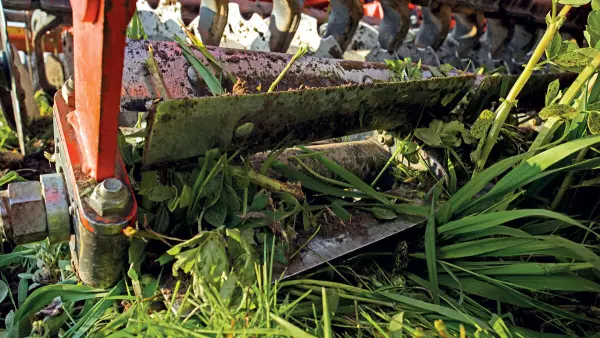

There are many advantages to planting cover crops. They contribute to fertilising the soil as well as improving its structure and combatting erosion and slaking. Cover crops are also used on livestock farms to supplement the ration. They can be used with conventional farming and minimum cultivation methods. The same species are used because the seeding techniques are often compatible with min-till. Tillage, seeding, and choosing the species for minimum cultivation.
Tillage technique for cover crops as part of a minimum cultivation method
The soil is generally tilled as part of a minimum cultivation method to save time and money (fuel). It is generally recommended to shred crop residues. This boosts decomposition, makes the field healthier, and makes the job easier for a stubble cultivator or seed drill.
After shredding, one or two shallow passes with a stubble cultivator should be carried out.
This:
- Reduces soil dry-out.
- Reduces slugs.
- Constitutes mechanical weeding.
- Improves soil structure for seeding.
- Stimulates microbial activity.
Watch out for perennials too. If the stubble cultivator doesn’t do the job, a herbicide will be required. Glyphosate is recommended in most cases.
If the farmer does not want to till the soil, direct drilling in plant cover or stubble is a good option.
What tools are required to seed and destroy catch crops in min-till methods?



Cover crops can be broadcast, seeded with a conventional seed drill, or by direct drilling.
Broadcasting cover crops should be carried out before or after harvest, with a fertiliser spreader or centrifugal seed drill followed by a roller.
During the second pass with the stubble cultivator before seeding, you can fit a centrifugal seed drill to the stubble cultivator to sow the catch crop. If you fit it with delivery tubes, seeding is more precise. If you have a conventional seed drill and would like to place the seeds with controlled precision, this technique will reduce losses during emergence. On the other hand, it is time-consuming, unless you use a different seed drill. One of the most common ways of destroying plant cover, with min-till, is to pass with the roller when the crop is frozen. The species chosen must, of course, be sensitive to frost. Another alternative is to use a chemical glyphosate.

Which species to choose: are legumes necessary?
Cover crops should be thought of as an investment. They come with many advantages, especially for min-till. As seeding is often simplified, technically, the same species can be used as for conventional drilling. Nonetheless, it is a good idea to include species such as legumes, often 3 or 4 mixed species, in the cover crop. The aim is to avoid nitrogen hunger by planting cover crops with balanced C/N because mineralisation is poorer than for plants grown in ploughed soil.
